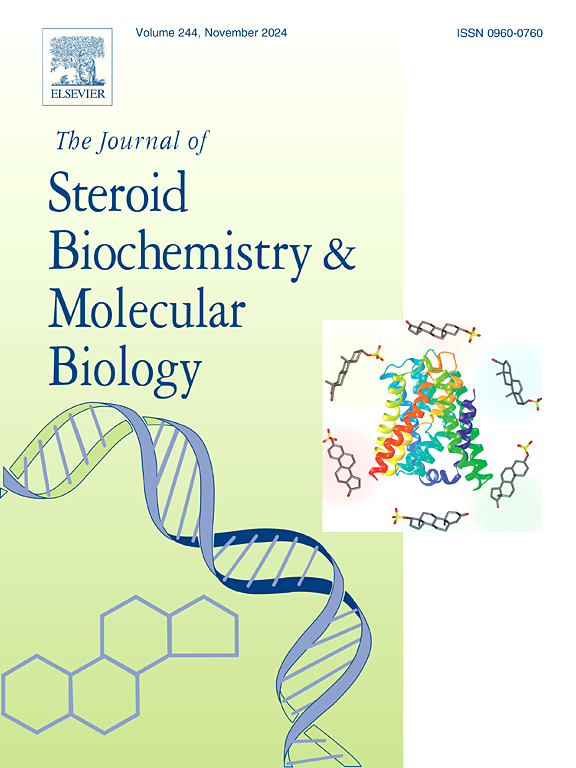Estrogen‐Driven Maintenance of GLUT1/GLUT4/SGLT1 under glucose starvation drives energy homeostasis in bovine PMNs
IF 2.7
2区 生物学
Q3 BIOCHEMISTRY & MOLECULAR BIOLOGY
Journal of Steroid Biochemistry and Molecular Biology
Pub Date : 2025-03-03
DOI:10.1016/j.jsbmb.2025.106716
引用次数: 0
Abstract
The negative energy balance (NEB) and fluctuations in estrogen (17β-estradiol, E2) during the perinatal period alter glucose metabolism in bovine polymorphonuclear neutrophils (PMN) by affecting the activity of glucose transporters. In the peripheral blood, glucose uptake by PMNs is primarily dependent on the Glucose transporter type1 (GLUT1), Glucose transporter type4 (GLUT4), and Sodium-glucose cotransporter1 (SGLT1). However, the mechanisms through which E2 regulates energy metabolism in these cells, particularly through the modulation of glucose transporter activity, are currently unclear. This study aimed to explore the regulatory mechanisms underlying the effect of E2 on the homeostasis of glucose metabolism in PMNs. The results revealed that E2 enhances the expression of GLUT1, GLUT4, and SGLT1 (P < 0.05) and increases hexokinase (HK) activity (P < 0.05) in PMNs. Additionally, E2 was found to inhibit Glycogen synthase kinase-3β (GSK-3β) activity (P < 0.05), increase glycogen and ATP levels (P < 0.05), and reduce apoptosis in PMNs. When PMNs were treated with 5 μM STF-31 (GLUT1 inhibitor) or 50 μM Phlorizin (SGLT2 inhibitor), their GSK-3β activity was significantly increased (P < 0.05). Further analysis indicated that E2 helps maintain cellular glycogen and ATP homeostasis in PMNs by regulating the competitive interactions among GLUT1, GLUT4, and SGLT1. Additionally, when cells were treated with 100 μM AF-1890 (HK inhibitor), the expression of GLUT1, GLUT4, and SGLT1 was significantly reduced (P < 0.05). However, E2 mitigated the inhibitory effect of AF-1890 on HK activity and reduced its influence on intracellular energy levels by promoting the expression of GLUT1, GLUT4, and SGLT1. This study demonstrates that E2 positively regulates the expression of GLUT1, GLUT4 and SGLT1 in PMNs, facilitating glucose uptake under low-glucose conditions. E2 also negatively regulates GSK-3β activity increasing cellular glycogen and ATP levels and thus maintaining energy homeostasis in these cells.
雌激素驱动的葡萄糖饥饿条件下 GLUT1/GLUT4/SGLT1 的维持驱动牛 PMN 的能量平衡
本文章由计算机程序翻译,如有差异,请以英文原文为准。
求助全文
约1分钟内获得全文
求助全文
来源期刊
CiteScore
8.60
自引率
2.40%
发文量
113
审稿时长
46 days
期刊介绍:
The Journal of Steroid Biochemistry and Molecular Biology is devoted to new experimental and theoretical developments in areas related to steroids including vitamin D, lipids and their metabolomics. The Journal publishes a variety of contributions, including original articles, general and focused reviews, and rapid communications (brief articles of particular interest and clear novelty). Selected cutting-edge topics will be addressed in Special Issues managed by Guest Editors. Special Issues will contain both commissioned reviews and original research papers to provide comprehensive coverage of specific topics, and all submissions will undergo rigorous peer-review prior to publication.

 求助内容:
求助内容: 应助结果提醒方式:
应助结果提醒方式:


